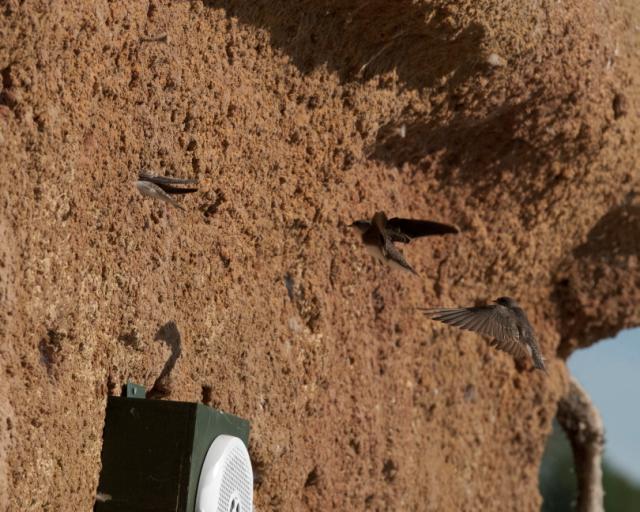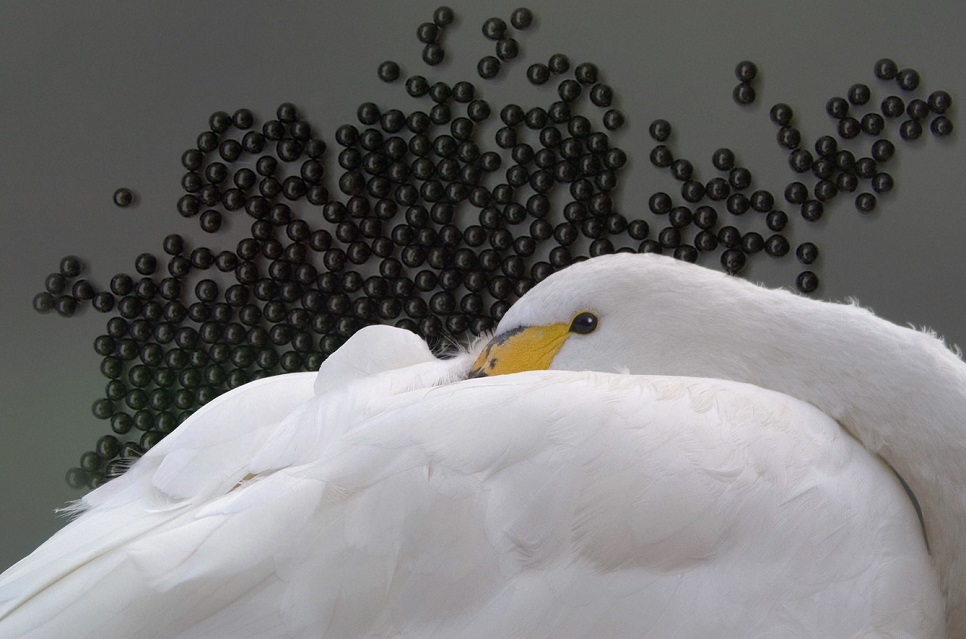Swallows & martins moving through the reserve
HUNDREDS of swallows, house martins and sand martins have been moving through the reserve in the past week, heading for their UK nesting sites. These three types of hirundine flock together during their migration from Africa but there seems to be less sand martins in the mix this year. We are hoping to lure some of the sand martins to begin a colony in the artificial nesting banks we created in the walls of our Sand Martin Hide by playing sand martins calls from a speaker. The house martins will move onto towns and nest in eaves of buildings. Swallows favour nesting on farm buildings near the water.
The swallows are easily distinguished by their reddish throat and long tail feathers. The house martins have a blue-black upper body with a white underside. Sand martins have a brown upper body and white under body with a brown band across the chest.
The martins and swallows are flying low over the water’s surface to ‘hawk’ insects to eat in the cool morning and evening temperatures between the Ramsar and Sand martin hides. During the day the birds are high overhead, catching insects that fly higher in the warmer air. The martins have also been swooping along the walls in front of the hide, investigating the nesting banks and the artificial colony ‘chatter’ from our speakers. We have the hide windows locked to avoid noise of visitors disturbing any nesting birds.
On the water directly in front of the Sand Martin hide Grounds Supervisor Sam Halpin has installed a floating gravel raft to provide a pair of common terns with a nesting spot. Sam waited until the black-headed gulls that compete for the same type of nesting areas had gone down on eggs before installing the platform to give our regular pair of common terns a chance to nest here. The terns are often seen perching on the posts in front of this hide. Their silver grey and white colour means the blend in with the gulls a bit but they are more agile and graceful with red-orange beaks and legs. The male terns will fish and courtship feed the female.
Other sightings from Sand Martin hide: Common Terns, nesting Black headed gulls, Egyptian geese, Canada geese, Grey lag geese & goslings, Tufted duck, Shelduck,Lapwing.


